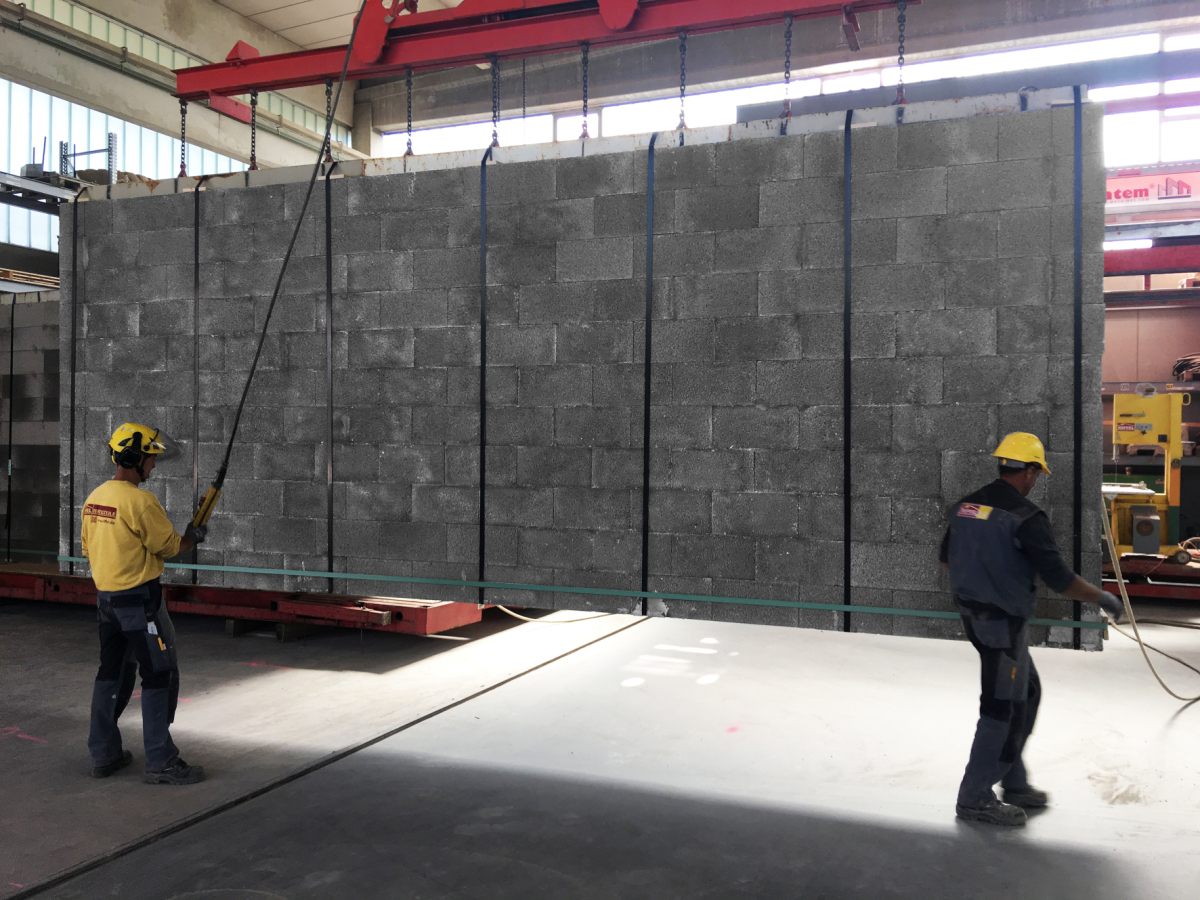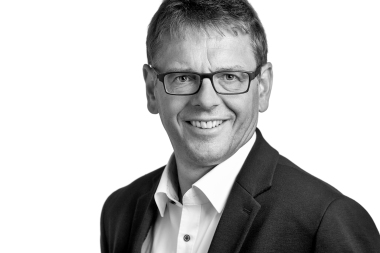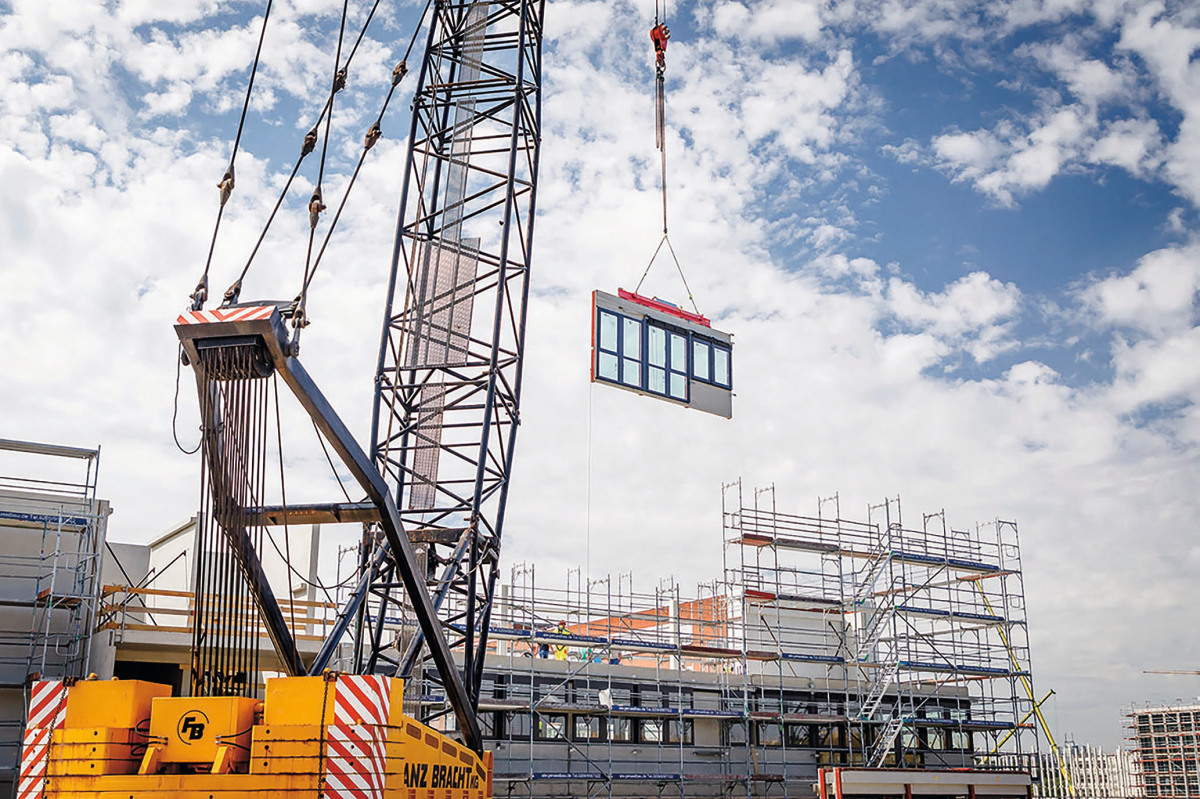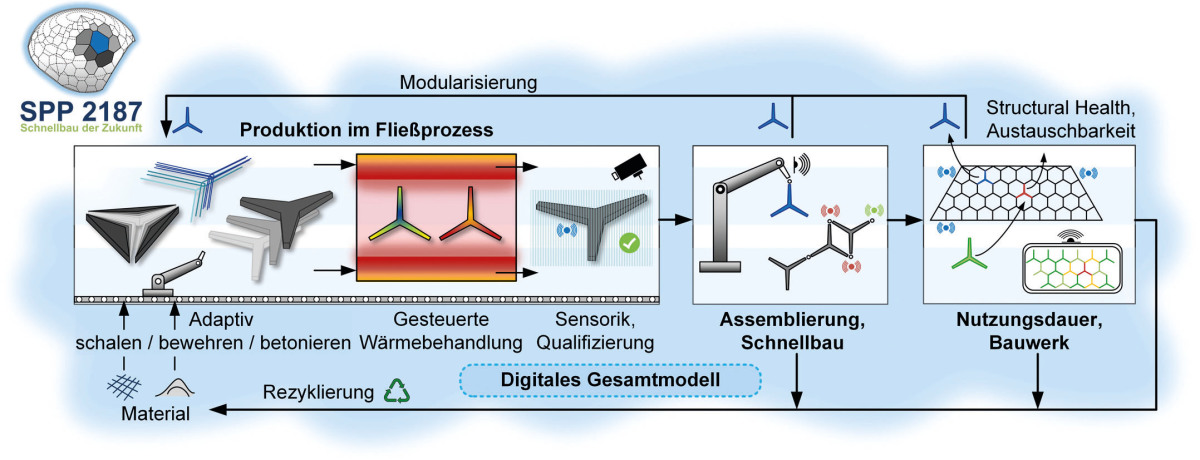Industrial prefabrication to combat the shortage of skilled workers and housing shortages
05.04.2023Flexible, sustainable, cheap and fast: In the industry, modular, serial construction using industrial prefabrication is a promising all-purpose solution to the lack of housing, lengthy planning and construction processes, and the shortage of materials and skilled workers. This digital data is then used to produce standardized freely combinable construction kits on the computer that are built together fully automatically at the factory, much like cars on an assembly line. Find out how far along this process is, the advantages it offers and what solutions are available from modular construction manufacturers at BAU 2023 in Munich from April 17 to 22.
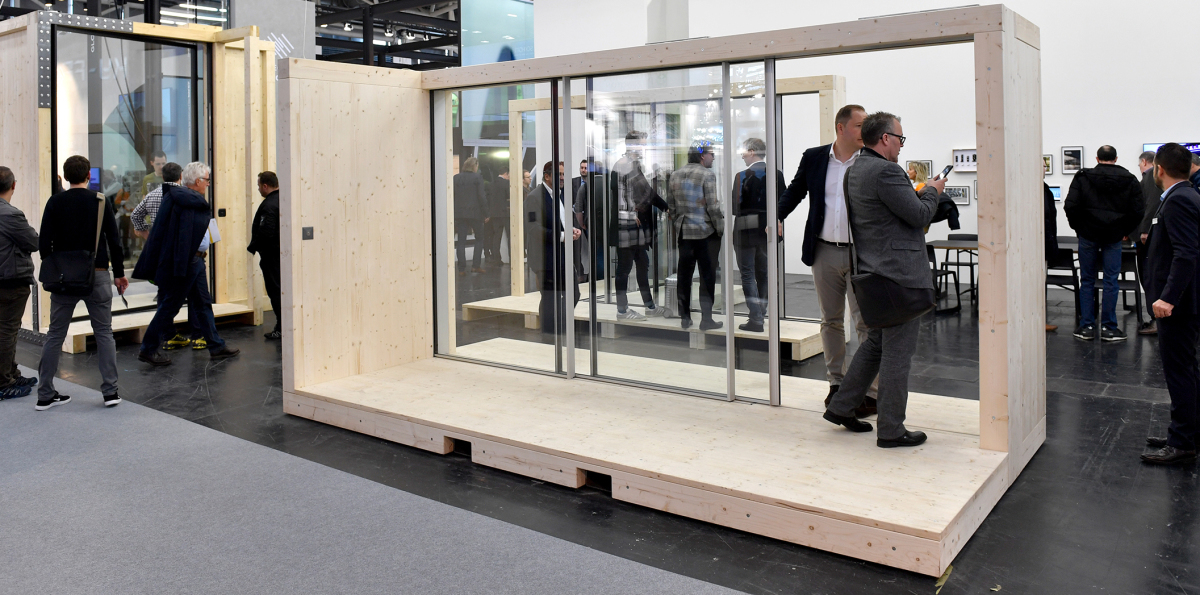
Figure: Messe München
When most people picture serial construction of prefabricated buildings, the first thing that comes to mind is the deary, monotonous soviet apartment buildings of the 60s and 70s. But this couldn’t be further from modern serial production. Serial construction no longer uses panels, but rather individual construction components that can be assembled and disassembled again on a computer using BIM in any number of variations, including all of the necessary information regarding quantity, physical characteristics, connections etc. As a result, different versions of a building with different floor plans can be created in just a few minutes.
The idea has been around since the 20s
This isn’t a completely new idea. The buildings of Bauhaus master Walter Gropius in Dessau, nested cubes and cuboids, already followed the modular principle. So too did the buildings of Le Corbusier in Paris and Ernst Mey in Frankfurt. These pioneers in modular serial construction wanted to democratize construction and housing in the 1920s and make them accessible to the masses, who often lived in poor conditions. This new form of architecture was a break with the historism of the German Wilhelmine Period. This meant functional houses with smooth building envelopes and flat roofs instead of playful facades and plastered ceilings. Influenced by housing shortages and a scarcity of materials, Gropius & co. preached rationalization and standardization as necessary economic production methods in line with the example set by Henry Ford, who revolutionized car manufacturing with his assembly line production.
Serial construction to combat the shortage of housing
The parallels to today are obvious. It is no coincidence, therefore, that the German government is turning to serial modular construction to combat the shortage of housing. Series production reduces construction costs and enables large quantities that are available quickly, even for multi-story buildings. Because of this, serial construction could be at least part of the solution and could help the German government to achieve its goal of building 400,000 apartments each year, of which 100,000 are to be social housing.
Prefabrication: Windows and walls from digital data
An essential prerequisite for serial construction is the prefabrication of building components in the factory. There, windows, walls or entire facades are created from digital data available in BIM models and sent to industrial automated production, just like cars on the assembly line. On the construction site, all that remains is to assemble the apartment, either partially or in its entirety. The standardized construction kits can be freely combined, which allows for a high level of variability when planning the floor plans—which are also standardized.
This type of construction has lots of advantages: more planning security, less construction time, less dependency on weather conditions, cost savings, less debris and noise on site, and fewer construction defects due to better quality assurance.
Modular construction works well in timber construction. That’s because, even with fully disassembled apartments, wooden modules are light and easy to transport, and can be assembled and connected quickly on the construction site. They are ready to move into in just a few days. In addition to wooden modules, construction companies are primarily using steel modules, reinforced concrete modules and hybrid modules made from wood stud walls and precast concrete ceilings.
Type approvals to promote serial construction
In order for serial and modular building to be used on a larger scale, the German government wants to introduce type approvals for modular buildings across the country and anchor them in the state construction regulations. This way, a building that has been approved once can be built in multiple locations without having to apply for a new approval each time.
Special area for modular construction manufacturers
Whether or not the module construction will experience a modern revival after its creation in the 1920s remains to be seen. Just four percent of accommodation in Germany is the result of serial construction. Modular construction manufacturers will show what is possible in this field in a special area at BAU (in the atrium between Halls A and B). The topic will also be featured in the lecture program. Manufacturers will present groundbreaking projects, some of which together with the participating architects, from Monday to Friday in the Communication Area in Hall B0 (at 1:00 p.m. each day). After the lectures, BAU will offer guided tours to the modular construction manufacturers in the atrium.
CONTACT
Messe München GmbH
Messegelände
81823 München/Germany
+49 89 949-20720


